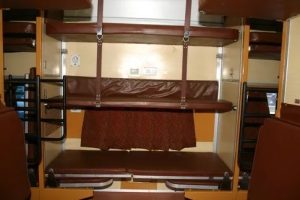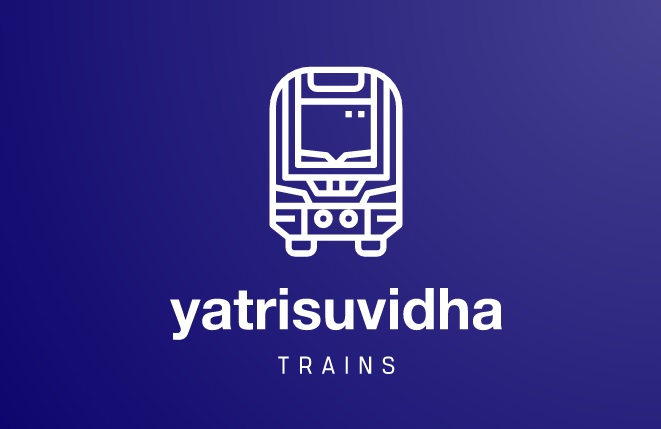
The middle berth on the side in Indian Railways’ Sleeper, 3AC, and other long-distance trains has been a topic of much discussion among travelers due to its unique placement and implications for passenger comfort. Side middle berths (SMBs) were introduced by Indian Railways in some trains to increase seating and sleeping capacity within the same train coaches, especially in Sleeper and 3AC classes where passenger density is high. This article explores the concept, design, functionality, and pros and cons of the SMB in Indian Railways, along with passenger perspectives, booking considerations, and potential improvements for the future.
Introduction to the Side Middle Berth (SMB)
In India, railways are among the most popular modes of transportation, with millions of passengers traveling across the vast country daily. The constant demand for more seating led Indian Railways to introduce innovative seating arrangements, one of which is the side middle berth (SMB) in sleeper and 3AC coaches. Traditionally, Indian Railway coaches had two side berths along the corridor for each bay of six seats/beds, but the SMB was added to increase seating capacity by utilizing unused space between the upper and lower side berths.
SMB was introduced as a means of accommodating more passengers without expanding the train’s physical size. In a typical coach layout, there are six berths per bay on either side, with additional two side berths (one lower and one upper) along the aisle. The SMB is placed between the side lower and upper berths, providing an extra sleeping arrangement.
How the Side Middle Berth Works
The SMB, as the name suggests, is an extra berth added between the side lower (SL) and side upper (SU) berths. When in use, the SMB is folded down, creating a middle sleeping berth parallel to the other two. When it is not in use, it can be folded back, creating space for the occupants of the side lower berth to sit comfortably during the day.
In an SMB configuration:
The lower berth remains a sitting option during the day and is converted to a sleeping berth at night.
The SMB is typically folded up and secured during the day but can be lowered for sleeping.
The upper berth (SU) remains fixed, and passengers can access it using a ladder or stepping on the lower berth.
This arrangement, while increasing capacity, has brought about new challenges for both passengers and railway staff.
Pros of the Side Middle Berth
Increased Passenger Capacity: The primary advantage of the SMB is that it allows more passengers to travel on the same train. For highly populated routes, this means more people can secure seats on busy trains, especially during peak travel times like festivals, holidays, and weekends.
Cost-Effectiveness for Railways: By adding SMBs, Indian Railways can increase revenue from ticket sales without needing additional coaches. This setup is economically viable, as it generates higher income while keeping train operations within existing infrastructure.
Affordability for Passengers: With more seats available, prices can be kept relatively lower, particularly in Sleeper and 3AC classes. SMBs ensure that budget-conscious travelers have increased access to tickets, and the ability to travel long distances without a significant cost increase.
Cons of the Side Middle Berth
Despite its benefits, the SMB has received criticism due to various passenger comfort and convenience issues.
Limited Space: The SMB is narrower and shorter than other berths, often making it uncomfortable for adults, especially tall or larger individuals. There is often limited headspace, as the SMB is sandwiched between two berths, which restricts movement and can make sleeping challenging.
Lack of Privacy: Side berths generally offer less privacy than inner berths, as they are along the corridor. Adding a middle berth reduces space further and makes the arrangement feel crowded, especially in Sleeper class.
Inconvenience for Side Lower Berth Passengers: Since the SMB is installed above the side lower berth, passengers on the lower berth may find their sitting space compromised. During the day, side lower berth passengers typically share their seat space with side middle berth passengers, which can be uncomfortable.
Inconvenient for Boarding and Disembarking: Accessing the SMB can be cumbersome, especially for elderly passengers or those with mobility issues. Climbing up or down from this middle berth can be challenging due to its confined space.
Lack of Daytime Seating Arrangement: Passengers who book the SMB are left without a designated seat during the day, leading to seat-sharing conflicts with side lower berth occupants. This setup results in passengers sitting on each other’s berths, which may lead to misunderstandings.
Passenger Experiences with the Side Middle Berth
Passenger experiences with the SMB vary widely, often depending on their height, physique, age, and preferences for travel comfort. Some passengers find the side middle berth manageable for short journeys, while others face discomfort, especially on overnight trips.
Here are some common complaints and issues that passengers have raised:
Height Constraints: Taller passengers often find the berth too short, making it difficult to stretch out fully. This issue is especially pronounced for those above average height.
Motion Discomfort: Side middle berths, being next to the train’s wall, experience more vibration and jerking, which can disturb sleep, particularly on tracks with frequent curves or uneven surfaces.
Crowding and Proximity: The proximity of SMB passengers to others on adjacent berths reduces personal space and adds to the congestion in the coach. This crowding, particularly in Sleeper class, can lead to discomfort due to lack of ventilation and privacy.
Daytime Seating Conflicts: SMB occupants often share seats with side lower berth passengers, leading to disputes. In some cases, lower berth passengers feel inconvenienced by SMB occupants using their space.
Booking the Side Middle Berth: Considerations
When booking tickets, Indian Railways’ online reservation system does not specifically highlight the SMB option; it is generally assigned automatically based on seat availability. However, there are some considerations passengers can take into account when selecting or avoiding the SMB:
Booking Early: Early booking often allows travelers to choose seats away from the SMB. Since SMB is usually the last berth allocated, securing a berth within the main bay can help travelers avoid it.
Opt for AC Coaches if Possible: Many passengers have found that Sleeper class SMBs are particularly challenging due to crowding and lack of air conditioning. In comparison, SMBs in 3AC, though still cramped, offer slightly more comfort due to air conditioning and fewer passengers.
Check the Seat Map Before Booking: Seat maps available on Indian Railways’ website or mobile app can help travelers identify the layout of their coach and potential SMB locations, allowing them to avoid booking these if needed.
Potential Improvements for Side Middle Berths
While the SMB has its drawbacks, Indian Railways could make several improvements to enhance passenger comfort without sacrificing the increased capacity benefits.
Improving Berth Dimensions: If feasible, increasing the length and width of the SMB to better accommodate adults would improve comfort. This adjustment would be particularly beneficial for taller or larger passengers.
Enhanced Cushioning and Bedding: Adding additional cushioning and offering better quality bedding could make SMBs more comfortable for sleeping, even within the space constraints.
Redesigning Berth Mechanisms: A better folding mechanism that allows SMBs to be stowed away more compactly during the day could provide additional seating and walking space in the aisle, reducing congestion.
Passenger Awareness and Booking Transparency: Clearer indication of SMB seating options in the reservation system would allow passengers to make informed choices and potentially avoid these seats if they prefer not to use them.
Dedicated Seating Space During Daytime: Indian Railways could consider allocating specific seating arrangements for SMB passengers during the day to prevent conflicts and overcrowding, enhancing the travel experience.
The introduction of the side middle berth by Indian Railways has been a strategic move aimed at increasing seating capacity without investing in additional coaches or infrastructure. While it has successfully increased the number of passengers accommodated on popular routes, the SMB has also brought new challenges regarding passenger comfort, space limitations, and seating conflicts.
For some, the SMB may be a practical solution for short-distance travel, but for others, especially on long journeys, the discomfort may outweigh the benefits. Indian Railways can continue to improve this setup by addressing comfort issues, providing better booking transparency, and considering redesigns that enhance passenger experience.
As Indian Railways continues to modernize and upgrade its fleet, accommodating passenger feedback about the SMB could lead to a more balanced approach, where increased capacity does not come at the expense of passenger comfort. For now, travelers are advised to consider these factors when booking their journey, especially on trains that include the side middle berth configuration.

Leave a Reply